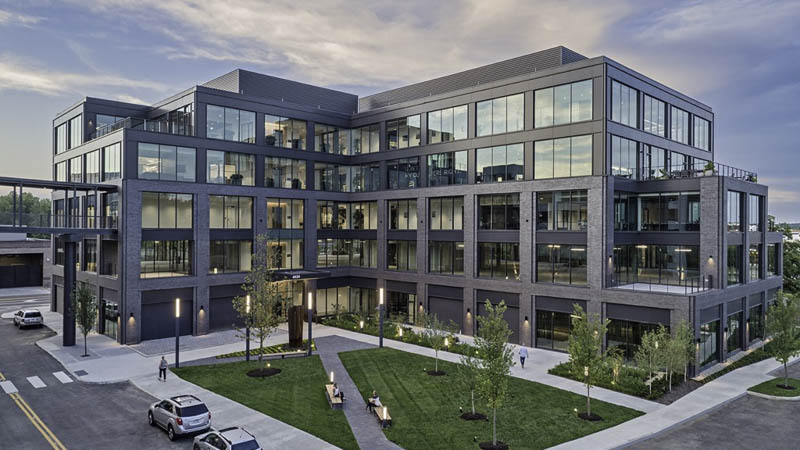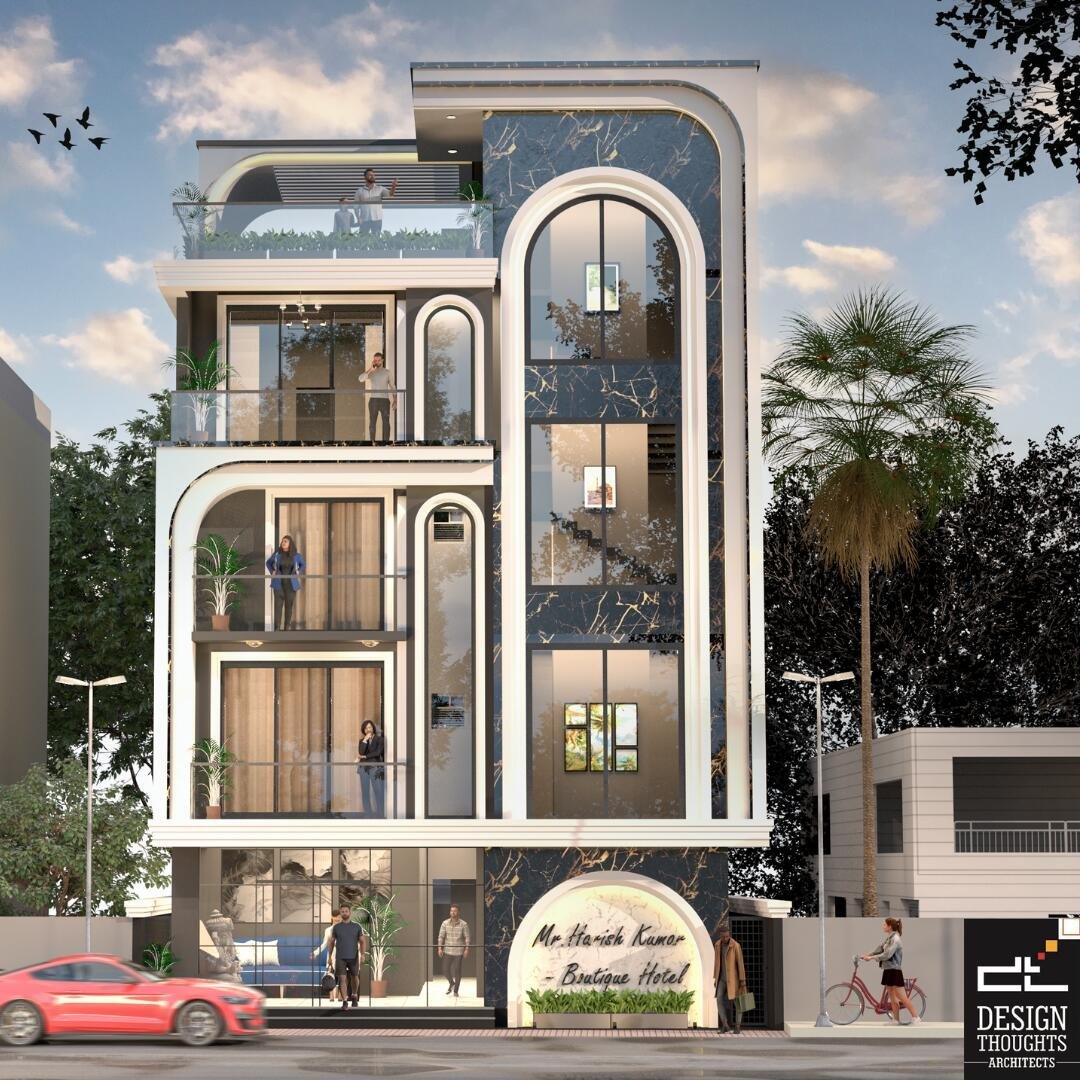What Sets commercial architects More Valuable Than Other Types of Designers?
Unveiling the Comprehensive Solutions Given by Commercial Architects for Modern Advancement
Commercial Architects serve a critical feature in contemporary development projects. They blend layout aesthetic appeals with capability while adhering to governing demands. Their proficiency extends beyond mere construction, including sustainable techniques and ingenious technologies. As they browse complex zoning legislations, Architects team up with various stakeholders to bring visions to life. This complex technique questions regarding the advancing function of Architects fit modern-day spaces and the influence of their service future advancements.
Comprehending the Duty of Commercial Architects in Modern Advancement
In contemporary metropolitan landscapes, Commercial Architects play a critical role in forming functional and aesthetic spaces that satisfy varied service needs. Their expertise expands past simple layout; they navigate intricate zoning legislations, constructing codes, and ecological laws. By collaborating with customers, they recognize specific requirements, guaranteeing that each project lines up with the customer's vision while likewise taking into consideration sensible elements such as sustainability and cost-effectiveness. Commercial Architects are proficient at incorporating cutting-edge innovations and materials into their designs, enhancing both the performance and power performance of structures. They perform detailed site analyses to assess the prospective challenges and opportunities provided by an area. In addition, efficient communication with specialists and various other stakeholders is crucial, making certain that the project advances smoothly from perception to conclusion. Inevitably, Commercial Architects are crucial in developing areas that not only meet useful functions but likewise contribute to the total character and vibrancy of metropolitan settings.
Idea Layout: Changing Ideas Into Truth
Idea design serves as a crucial phase in Commercial design, where innovative style options emerge from innovative thinking. This process depends on joint ideation, combining diverse point of views to refine and improve initial concepts. As ideas take shape, they change from abstract notions into tangible building realities.
Ingenious Style Solutions
Transforming concepts into reality is the hallmark of cutting-edge layout options in Commercial design. These remedies blend creative thinking with capability, addressing the special demands of contemporary advancements. By leveraging advanced innovations and sustainable practices, Architects craft spaces that are not just aesthetically attractive however additionally efficient and versatile. Emphasis on user experience drives the style procedure, making certain that settings foster productivity and cooperation. Each job benefits from a tailored technique, where concepts are meticulously established to reflect the client's vision while considering future fads. Cutting-edge design options likewise prioritize adaptability, permitting adjustments with time as company needs advance. Eventually, these approaches boost the general worth of Commercial spaces, making them essential in today's affordable landscape.

Collective Ideation Refine
Collaboration serves as the backbone of the ideation procedure in Commercial architecture, fostering imagination and advancement among varied stakeholders. Architects, clients, engineers, and neighborhood members take part in vibrant discussions, guaranteeing that all point of views are thought about. This comprehensive strategy enables the exploration of various design principles, motivating unique solutions that straighten with the job's vision. Via workshops and brainstorming sessions, concepts evolve and refine, changing initial concepts into substantial styles. Technology also plays an essential function, with devices such as Building Details Modeling (BIM) helping with real-time collaboration and changes. Inevitably, this joint ideation process not just enhances the design outcome but also cultivates a sense of ownership and investment among all parties involved, leading to effective Commercial growths.
Zoning Evaluation: Navigating Laws and Conformity
As developers begin on brand-new projects, understanding zoning regulations is important to making sure compliance and avoiding pricey delays. Zoning evaluation plays a vital function in this process, as it includes examining local zoning regulations that determine land usage, constructing height, density, and obstacles. Commercial Architects possess the proficiency to browse these complex policies, aiding customers identify permissible usages and any kind of essential differences.
Sustainable Style Practices: Structure for the Future
Lasting style practices are progressively crucial in the domain of Commercial design, especially as environmental problems continue to escalate. Architects focus on environment-friendly materials, energy-efficient systems, and style strategies that reduce waste and ecological impact. Incorporating eco-friendly energy sources, such as photovoltaic panels and wind turbines, permits structures to generate their very own power and decrease dependence on fossil fuels.Furthermore, sustainable style emphasizes the relevance of interior environmental high quality. This includes utilizing natural light, improving air flow, and picking safe products to boost resident health and wellness and productivity. Eco-friendly roofs and living wall surfaces are likewise popular features that add to biodiversity and metropolitan cooling.Additionally, Commercial Architects often incorporate water preservation techniques, like rain harvesting and drought-resistant landscaping. Through these cutting-edge approaches, they develop spaces that not just fulfill contemporary needs yet likewise promote a sustainable future, attending to the growing demand for liable development in the modern globe.
Project Administration: Ensuring Timely and Effective Execution
Effective job monitoring is important for making certain that Commercial architecture projects are completed on schedule and within spending plan. This role encompasses a range of obligations, including the control of different stakeholders, timelines, and sources. Commercial Architects take advantage of their proficiency to produce comprehensive project strategies that describe essential milestones and deliverables, permitting methodical development tracking.Regular communication among employee and clients is critical, fostering openness and assisting in punctual decision-making. Threat administration techniques are additionally used to recognize possible difficulties early, enabling aggressive remedies to be established. By making use of advanced task administration devices, Architects can keep track of task efficiency in real-time, making modifications as essential to maintain effectiveness.
Interior Decoration: Producing Useful and Visual Areas
Interior decoration plays an important function in enhancing both functionality and aesthetics within Commercial spaces. Efficient space planning can optimize operations and improve individual experience, while aesthetic style principles add to an aesthetically appealing setting - commercial architects. With each other, these elements produce areas that are not only sensible however also inspiring
Room Preparation Performance
While optimizing the utility of offered room, Commercial Architects focus on room planning effectiveness to produce both practical and aesthetically pleasing environments. This technique entails careful analysis of the spatial layout to assure perfect use every square foot. Architects think about elements such as process, availability, and all-natural light to boost usability. By purposefully placing furniture, devices, and workstations, they facilitate activity and interaction amongst individuals, promoting efficiency. Additionally, zoning different areas for particular features aids in taking care of sound and personal privacy, producing an unified environment. With reliable room planning, Commercial Architects can change constraints into chances, making sure that each space satisfies the varied requirements of its occupants while adhering to governing demands and More about the author industry criteria.
Aesthetic Layout Concepts
Visual layout concepts play a vital role fit environments that are not only useful yet likewise aesthetically attractive. These concepts direct Commercial Architects in producing areas that resonate with customers while improving brand identity. Key aspects include equilibrium, percentage, and harmony, which interact to create a cohesive look. Color schemes and products are meticulously chosen to stimulate preferred feelings and support the total theme. In addition, lights plays an important function, influencing mood and you can find out more visibility while highlighting building attributes. By incorporating these principles, Architects ensure that areas are not just useful but likewise inviting and inspiring. Eventually, reliable aesthetic design cultivates a positive customer experience, urging involvement and complete satisfaction in Commercial atmospheres.
Collaboration With Stakeholders: Promoting Effective Collaborations
Effective partnerships in Commercial style depend upon efficient collaboration with stakeholders, making certain that every voice is heard and valued. This collective approach includes appealing various parties, consisting of customers, service providers, and neighborhood members, throughout the design and growth procedure. By fostering open communication, Commercial Architects can address problems, collect understandings, and line up the task's vision with stakeholder expectations.The combination of diverse perspectives enhances creative thinking and innovation, resulting in more functional and cosmetically pleasing designs. Normal conferences, responses sessions, and workshops facilitate this discussion, allowing Architects to adjust their plans in response to stakeholder input. Furthermore, developing trust with transparency and liability enhances these collaborations, causing a smoother job execution.Ultimately, the success of modern-day developments relies on the Architects' ability to browse and balance varying passions, producing a joint environment that advertises shared goals and mutual success.
Regularly Asked Concerns
How Do Commercial Architects Handle Budget Plan Constraints Throughout a Project?

What Sorts of Software Program Do Commercial Architects Frequently Use?
Commercial Architects commonly make use of software such as AutoCAD for composing, Revit for Building Information Modeling, SketchUp for 3D modeling, and project management tools like view publisher site Microsoft Project to improve partnership and simplify process throughout the style process.
Can Commercial Architects Help With Getting Financing for Projects?
Commercial Architects can assist in acquiring financing for projects by preparing in-depth propositions, helping to express design visions, and supplying monetary forecasts that can enhance the likelihood of protecting needed funding from capitalists or financial institutions.
Just How Do Architects Make Sure Security Throughout the Building Refine?
Architects assure safety and security during building by carrying out rigorous layout standards, collaborating with engineers, carrying out regular website evaluations, sticking to regional guidelines, and fostering interaction among all stakeholders to alleviate dangers and advertise a safe and secure working setting.
What Ongoing Assistance Do Architects Supply After Job Conclusion?
After task conclusion, Architects use continuous assistance with upkeep examinations, performance assessments, and design modifications. They ensure buildings satisfy advancing requirements, address prospective issues, and preserve compliance with policies, fostering a long-term connection with customers.